| | | quote | Originally posted by FieroMaster88:
Thinking I might have time to modify the Fiero throttle this week. This weekend was so busy I didn't get to do anything to the car. I have to work this coming Saturday and am going to try to find time to align the car. Anyone have any good alignment specs for handeling. I'm not concerned with tire wear. |
|
Just for reference:
ALL FIRED UP!
The following article is an excerpt from a 1991 Kit Car magazine article from Herb Adams VSE. I have only included the suspension information.
Herb Adams was a GM engineer who went on to produce some of the best handling "massaged" Pontiacs of the 1970s to 1990s.
FROM THE GROUND UP
Making a standard production car handle well on the racetrack often requires a variety of modifications. Each change is aimed at correcting one or
more problem areas. You should start from the ground up by selecting the right tire sizes.
The basic handling problems any rear- or mid-engine car is that the center of gravity is behind the traction center of the tires. Rear-engine race cars
compensate for this by using larger tires on the back and smaller tires on the front. This moves the traction center to the rear so it is on, or behind, the
center of gravity. You can use larger rear tires on your Fiero for the same benefit. The stock rear fenders have room for Goodyear ZRS 255/50x16 tires
on 16x9 wheels, although 225/50x16 tires on 16x8 wheels will also provide improvement.
The basic stability of your mid-engine Fiero can also be improved by moving the center of gravity forward. The easiest way to do this is to move the
battery from the rear to the forward luggage compartment, or fit it ahead of the right front wheel well. The latter location requires more work, but it does
preserve some of the limited storage space.
BEEF UP YOUR BUSHINGS
The rear control arms on a stock Fiero are mounted the the frame with rubber bushings. They allow the rear arms to move forward under power and
rearward under braking, and the effect on handling is a change in steering direction whenever the throttle or the brakes are applied.
The other problem with the earlier Fiero rear control arm bushings is that they deflect inward during cornering, which changes the rear wheel camber angle.
Both of these handling problems can be corrected by replacing the stock rubber control arm bushings with steel bushings.
Steel bushings are required for this application because of extreme loads resulting from driving and cornering forces. I have found that the only bushings
that hold up are aircraft-quality hardened steel on hardened steel mono-balls. Steel sleeves must be welded to the control arms to secure the mono-balls
in place. This operation requires that the rear arms be removed from the car. The installation takes time and money, but is well worth the results. Changing
the rear control arm bushings is the most significant change that can be made to improve your Fiero's handling. *
When the rubber is removed from the rear control arm bushings, there is potential for more ride harshness and road noise. This is usually not a problem
because the rear sub-frame is still mounted to the body with rubber mounts.
If you want ultimate handling on the racetrack and you're not concerned about noise, you can replace the rubber sub-frame mounts with steel or aluminum to
keep the sub-frame from moving in relation to the body. The handling improvements gained by this modification are less than when the control arm rubber
is removed, but it does provide some advantage on the racetrack.
The front control arm bushings are also mounted in rubber so they deflect when cornering loads are applied. If these bushings are replaced with steel and
nylon bushings, there is a noticeable improvement in front-end cornering power. Since the weak link in the Fiero handling is not the front suspension, and
because there is less weight on the front end, changing the front control arm bushings is not recommended unless race ready handling is desired. The arm
must be removed from the car to replace the bushings.
NEUTRALIZING UNDERSTEER
Besides the rear control arm bushings, adding and/or changing the stabilizer bars are the most significant handling improvements you can make on your Fiero.
Due to the Fiero's inherent tendency to spin-out at the limits of its cornering power, Pontiac engineers tuned the cars handling characteristics to provide an
excessive amount of understeer. This trait ensures safe handling for the majority of drivers, but does not permit fast cornering. The stock Fiero uses a front
stabilizer bar and no rear stabilizer bar to create the desired understeer. If your Fiero has steel rear control arm bushings, its rear suspension is capable of
absorbing more cornering force, so some amount of rear stabilizer can be used. I have found that by increasing the effectiveness of the front stabilizer bar,
we can use a large rear stabilizer bar. By matching the size of the front and rear bars, it is possible to make a Fiero handle with neutral steer instead of
excessive understeer. Neutral steer provides the maximum cornering speed because all the tires work at the same level. Large front and rear stabilizer bars
limit the body roll angle and positive camber, which keeps the tires from losing cornering power
The use of large front and rear stabilizer bars doesn't have any significant effect on ride quality or road noise. The addition of the front and rear bars will also
make a significant improvement in steering response and precision. The 1.25 inch diameter rear bar recommended by my company,
(Herb Adams VSE, Dept. KC,23865 Fairfield Place, Carmel, CA 93923 408/649-8423) is tuned to be used in conjunction with a one inch front stabilizer bar.
Do not use a rear bar without the front; doing so will result in oversteer, which can be dangerous.
Using a larger front bar improves the steering precision, allowing removal of the stock steering dampener. The Fiero dampener reduces steering wheel kickback
and vibration, but with a more effective front stabilizer bar, these problems are minimized so it is no longer needed. Removing the steering dampener also allows
the steering wheel to turn faster for improved handling and overall control.
SPRINGS, SHOCKS AND OTHER STUFF
Spring rates on stock Fieros are correct for most purposes, but the problem is that most of these cars are too high off the ground. The best way to lower either
the front or the rear is to cut the existing springs. By cutting half a coil off a spring and reforming the ends, you can lower your Fiero about one inch. Lowering the
car reduces the available ride travel, but for most driving conditions, there is no loss of ride quality. With Koni adjustable shocks and struts, you can tune the ride
quality in relation to to improved handling.
The brakes on an '88 Fiero are extremely good even on the racetrack. Unfortunately, it's not an easy conversion to mount the '88 brakes onto an '84-'87 Fiero.
This means you will have to suffer with the barely effective brakes now on your car. I have tried many things to improve the stock brakes, but there doesn't seem
to be an easy solution. Semi-metallic pads offer some advantage for a limited fix. **
As for chassis reinforcements, the basic Fiero structure is heavy and pretty stiff. I didn't notice any structural improvement after installing a rollcage for racing
purposes, so I don't recommend this modification for street use.
GETTING A LINE ON ALIGNMENT
The camber adjustment on the front of a Fiero is accomplished by rotating the upper ball joints from front to the back. The ball joint is offset between the mounting
bolts so you have your choice of two positions. For the best handling, you want the position that gives the most negative camber. Usually this isn't much, so you'll
need to move the holes to get more. I don't recommend more then one degree of negative camber for street use.
For more caster, move the spacers between the upper control arm and the frame bracket, positioning the upper arm as far back in the car as possible. You only
need one degree of positive caster to have good handling and you can usually obtain this by moving the spacers on the Fiero.
As for toe-in, it should be 1/16-inch at the front to provide good control and stability under braking. Rear toe-in is set by turning the rear tie rods. It's important to
have between 1/16-inch and 1/8-inch toe-in at each rear wheel. Measure each rear wheel in relation to the rocker panels when determining rear toe-in. If you
measure one wheel versus the other, you can end up with the proper toe-in, but the car will probably dog-track.
For setting rear camber, move the shock strut slotted hole where it connects to the rear upright. For street driving, you want at least one degree of negative
camber; for racing, you need about two degrees.
NOTE: Many of the recommendations given above can be applied to any street driven Fiero, they are, however, somewhat severe for daily driving. Polyurethane
instead of steel bushings would be more streetable although poly bushings can cause binding and lots of squeaks and groans from the suspension, and
the 84-87 brakes can be converted to vented GA type parts. (This article did date from 1991) Remember, Herb Adams is a master of chassis engineering and
following his lead will produce a far better handling Fiero, but possibly one which is less forgiving. You decide how far you want to go.



















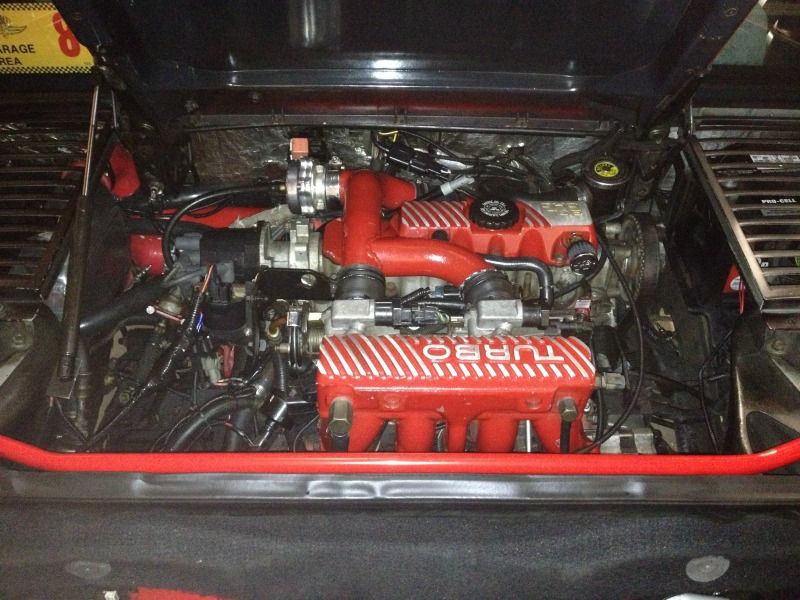
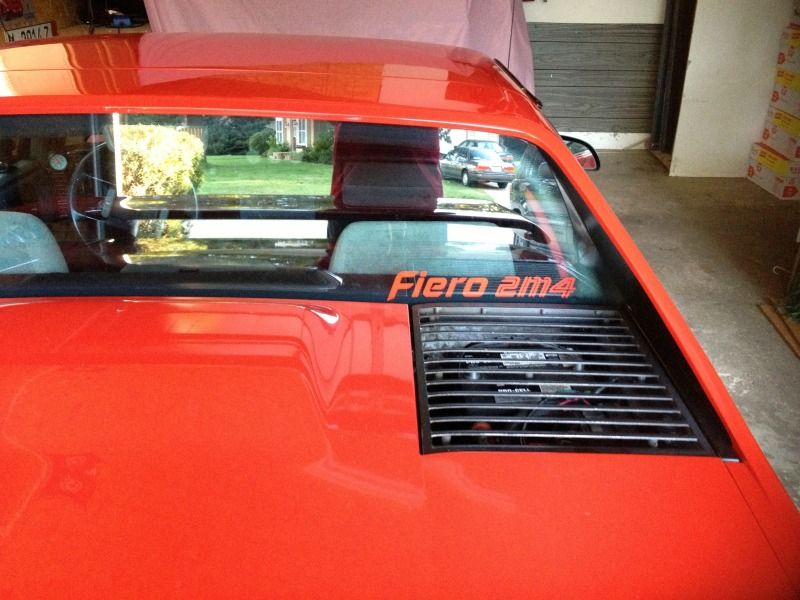
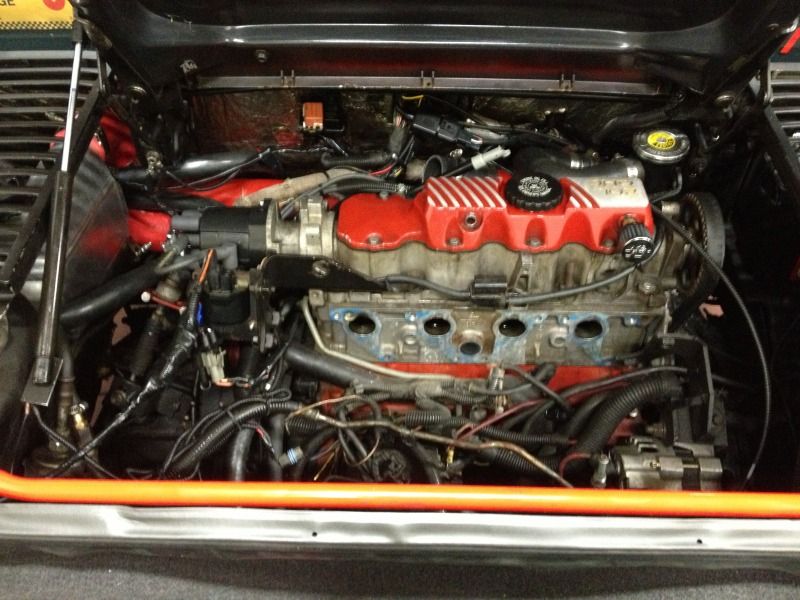
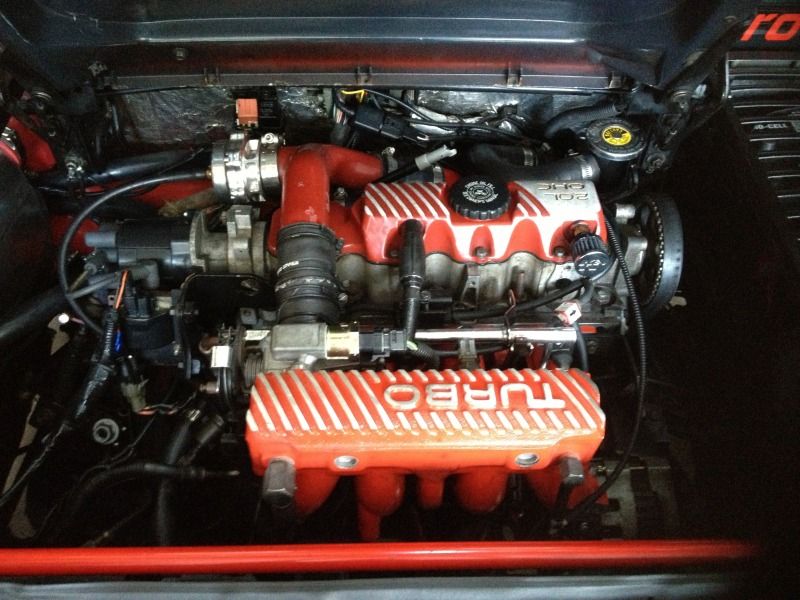
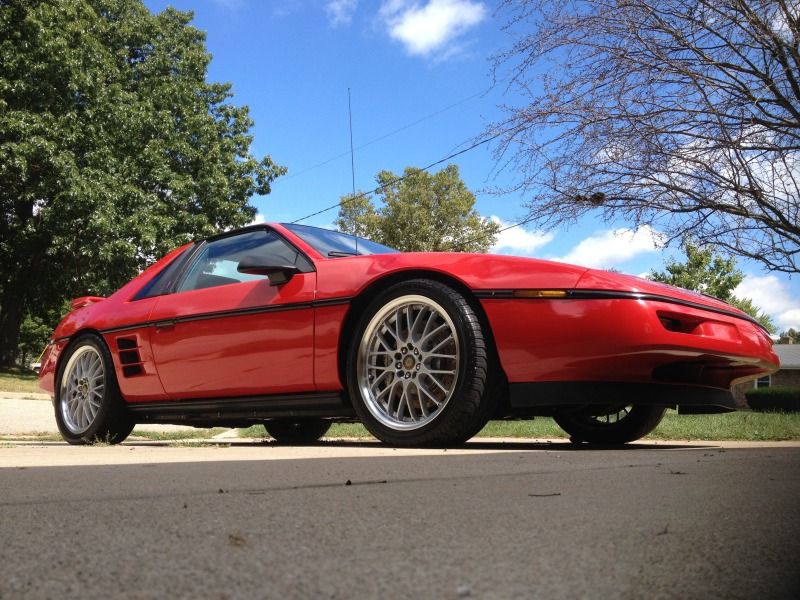
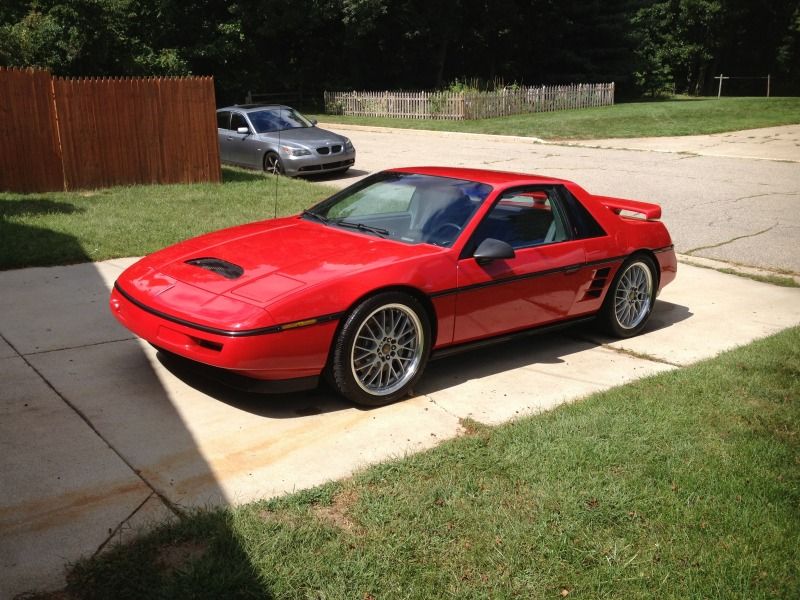
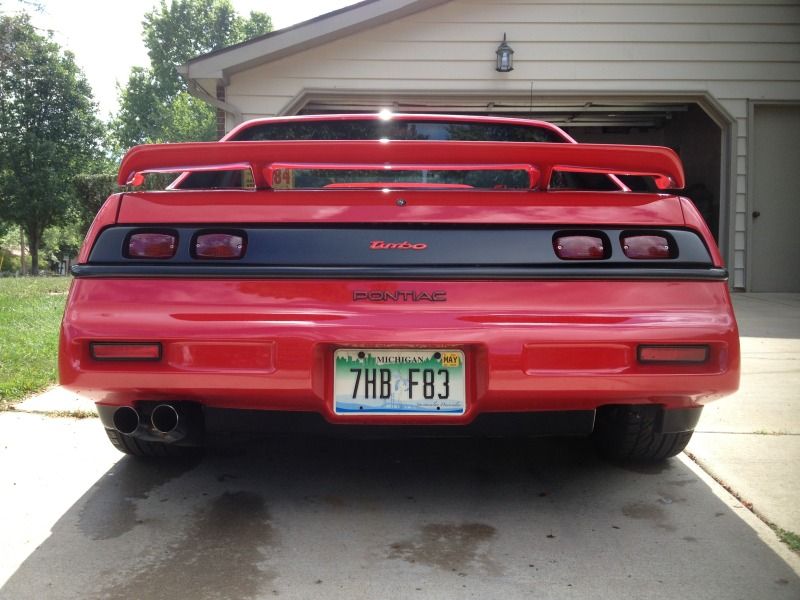
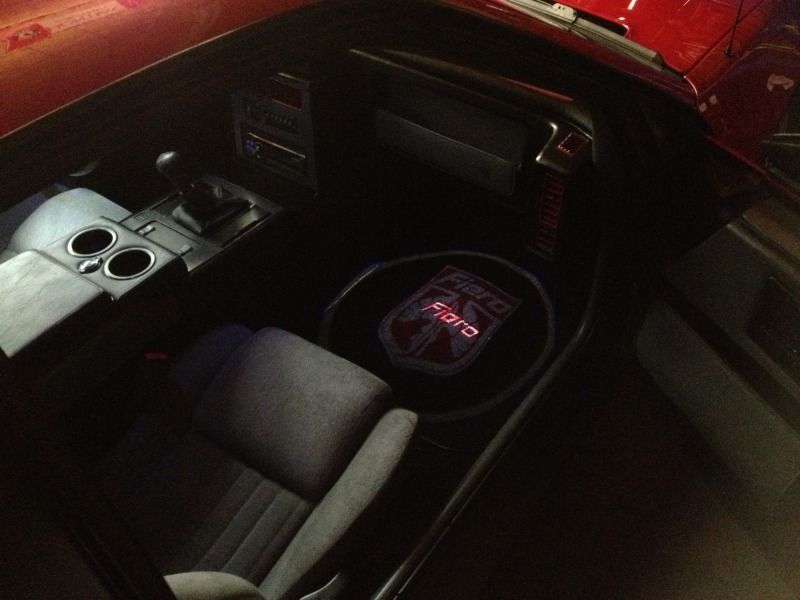

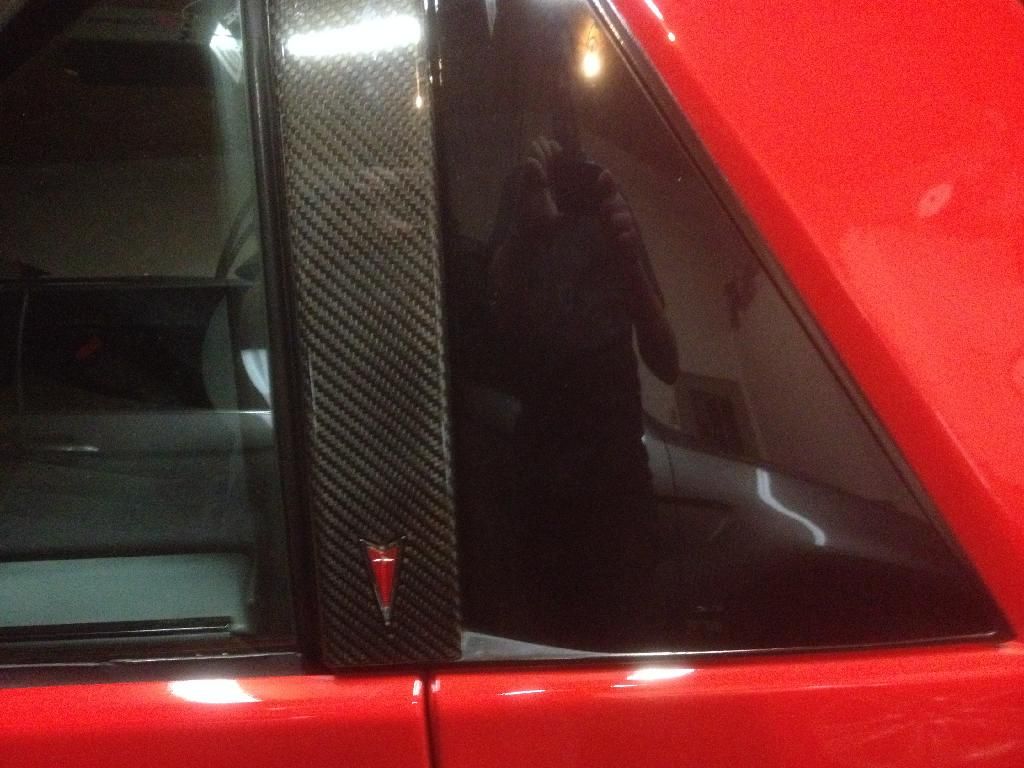
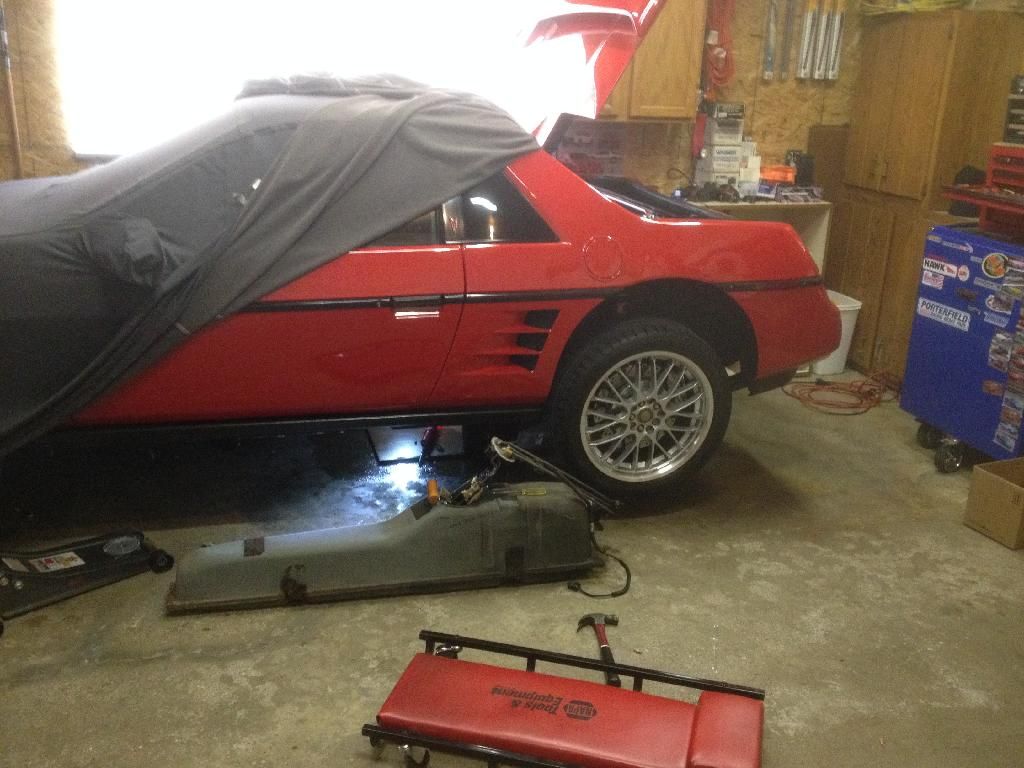
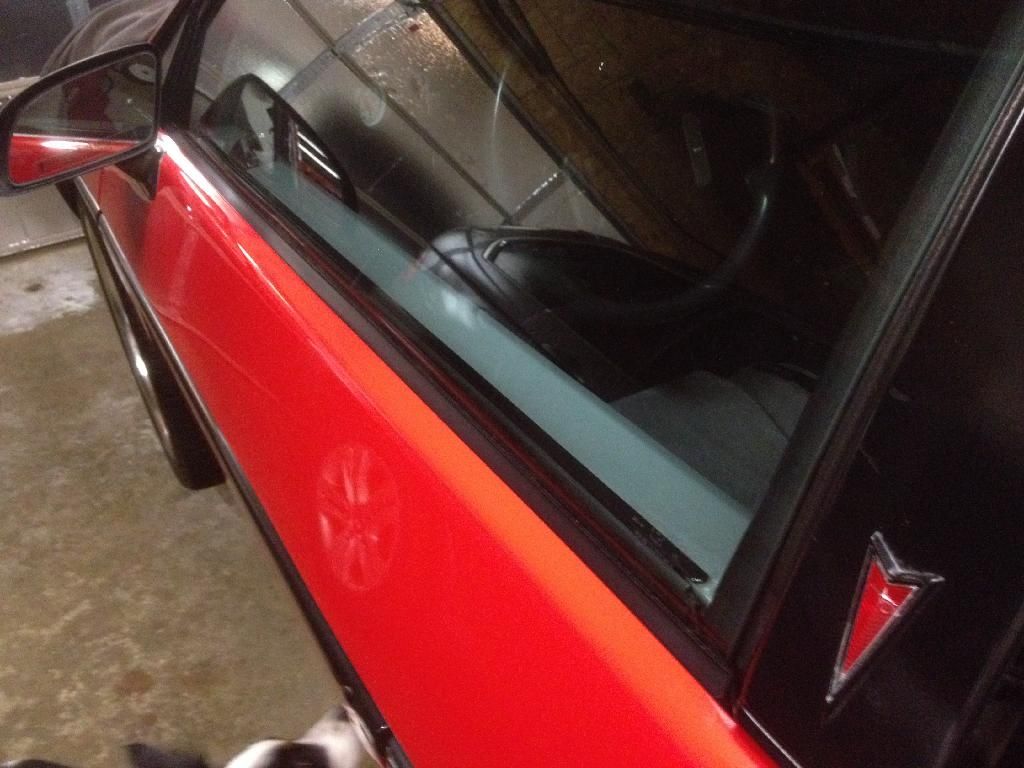
 How'd the install go?
How'd the install go?
